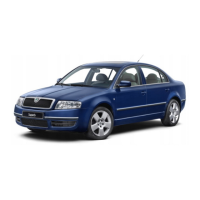
Do you have a question about the Skoda Superb 2004 and is the answer not in the manual?
| Brand | Skoda |
|---|---|
| Model | Superb 2004 |
| Category | Automobile |
| Language | English |
Describes the Owner's Manual, Service Schedule, Assistance in Europe, and Technical Data.
Contains information regarding controls, care, operation, safety, and vehicle value.
Details vehicle data, service intervals, work overview, proof, and warranty information.
Provides contact addresses and telephone numbers for Škoda Importers.
Includes the most important identification data of your vehicle.
Explains how the manual is divided into chapters, table of contents, and subject index for easy navigation.
Describes that most sections apply to all models and mentions optional equipment.
Details headings, brief information, and instructions accompanying illustrations.
Explains the different types of notes (Warnings, Caution, Environmental, Normal) used in the manual.
Defines direction indications like 'left', 'right', 'front', 'rear' relative to vehicle travel.
Provides a general view to familiarize with instruments, gauges, and controls.
Presents a diagram of the instrument cluster with numbered components.
Explains the function of the tachometer and its red zone.
Details the coolant temperature gauge operation and temperature ranges.
Explains the fuel gauge operation, tank capacity, and reserve marking.
Describes how to set the digital clock time and minutes.
Explains the speedometer, trip counter, and fault display.
Details the Service Interval Display, its messages, and resetting procedures.
Explains the multi-functional indicator, its information range, and memory functions.
Explains how to activate and navigate the menu system in the information display.
Describes the warning lights and signals for open doors, luggage compartment, and bonnet.
Explains how radio information is displayed in addition to normal radio display.
Details the vehicle condition check, error messages, and warning signals.
Explains the meaning of red symbols indicating danger and the required actions.
Explains the meaning of yellow symbols indicating a warning and the required actions.
Provides an overview of warning lights indicating functions and faults.
Explains the operation of turn signal lights and hazard warning lights.
Indicates when the main beam indicator light comes on.
Monitors the airbag system, displays faults, and explains front/side/head airbag deactivation.
Explains the indicator light for turn signals when towing a trailer.
Indicates when the low beam indicator light comes on.
Describes when the fog lights warning light comes on.
Explains the EPC warning light for petrol engines and indicates 'ENGINE WORKSHOP!'.
Details the glow plug indicator light for cold engines and fault indications.
Explains the coolant warning light, temperature ranges, and actions for overheating.
Instructs to check brake pads when the warning light comes on.
Indicates the bonnet warning light when the bonnet is unlocked.
Explains the fuel reserve warning light and refueling reminder.
Details engine oil warning lights (red/yellow) for pressure and level faults.
Describes the warning light and signal for open doors, luggage compartment, and bonnet.
Explains the warning light for low washer fluid level and topping up.
Details the warning light for bulb defects and resulting messages.
Explains the EPC warning light for electronic power control faults.
Describes ESP operation, warning light, and its relation to ABS.
Explains TCS operation, warning light, and its relation to ABS.
Details the ABS warning light functionality and operation.
Explains the electronic immobiliser and its warning light.
Details the brake system warning light for fluid level, ABS faults, or handbrake.
Explains the dynamo warning light and actions for faults.
Describes the seat belt warning light and its reminder function.
Describes the set of keys, including master, service, and emergency keys.
Explains the importance of the key ring for ordering replacement keys.
Provides instructions on how to disconnect the folding key and change the battery.
Explains how the electronic immobiliser prevents unauthorized operation.
Describes how the central locking system unlocks/locks all doors simultaneously.
Details the safe securing system that automatically blocks door locks.
Explains the automatic locking of doors when the car reaches a certain speed.
Provides step-by-step instructions for unlocking the vehicle with the key.
Details the process of locking the vehicle using the key.
Explains the use of buttons for central locking, unlocking doors, and fuel filler flap.
Describes the single door opening function to unlock only the driver's door.
Details how to open, close, and permanently lock the boot lid.
Explains child safety locks on rear doors and how to switch them on/off.
Describes the functions of the remote control for unlocking, locking, and windows.
Explains how to re-synchronize the key code if the remote control system fails.
Details the anti-theft alarm system, its description, and how it is switched on.
Explains how to switch off the anti-theft alarm system.
Describes how turn signal lights indicate door closure when locking the car.
Explains the meaning of the LED in the door trim indicating alarm activation.
Explains how the interior monitor detects movements and triggers the alarm.
Details how to switch on power windows and open/close them.
Explains closing windows, safety pushbutton, and notes on operation.
Describes window switches in front passenger and rear doors for opening/closing.
Explains opening/closing windows with the key or remote control.
Addresses issues with automatic closing/opening of windows and operation in winter.
Provides description and operation details for the electric sliding/tilting roof.
Explains operation, comfort position, opening fully, tilting, and closing the roof.
Describes closing the sliding/tilting roof from the outside.
Details manual closing of the sliding/tilting roof using a crank handle.
Details manual closing of the sliding/tilting roof using a crank handle.
Explains switching lights on and off, side lights, low beam, and main beam.
Details switching off all lights and notes on light functions.
Describes switching on fog lights and rear fog lights.
Explains how to adjust the brightness of the instrument lighting.
Explains how to adjust headlight range to avoid dazzling oncoming traffic.
Describes how to switch the hazard warning light system on or off.
Details the functions of the turn signal and main beam lever.
Explains front interior lighting, storage compartment lighting, and door contact setting.
Details switching interior lights on/off, front reading lights, and storage compartment lighting.
Describes rear interior lighting with and without interior monitoring sensors.
Explains the luggage compartment light operation.
Describes the entry lighting in the door trim panel.
Focuses on the rear window heater.
Details the operation of the rear window heater and sun visors.
Describes the rear sun screen and its unrolling mechanism.
Describes the rear sun screen and its unrolling mechanism.
Explains operation of windscreen wipers, washing system, and rain sensor.
Details replacing windscreen wiper blades and warnings related to their condition.
Explains how the headlight cleaning system works and maintenance.
Describes manual dimming interior rear-view mirror operation.
Explains the automatic dimming function of the interior rear-view mirror.
Details the exterior mirror with entry lighting function.
Explains heating and adjustment of electrically adjustable exterior mirrors.
Covers folding, tilting, and memory functions for exterior mirrors.
Provides basic information on front seat adjustment for safety and comfort.
Details manual adjustment of front seats: forward/back, height, backrest angle, lumbar support.
Explains electrical adjustment of seats: seat adjustment and lumbar support.
Covers adjusting seat position, lumbar support, and memory functions.
Explains memory buttons for storing seat and mirror positions.
Details storing and retrieving seat and mirror settings for driving forward and reversing.
Explains assigning remote control to memory buttons.
Describes retrieving settings via memory buttons or remote control.
Details adjusting head restraint height and angle, and removal/installation.
Explains folding out and setting the central back rest for comfort.
Describes adjusting the passenger seat and using a protective sack.
Explains how to use a protective sack to prevent dirt on the passenger seat.
Describes the rear footrest for increased passenger comfort.
Details heating the surfaces of front and rear seats.
Explains switching on and adjusting front seat heaters.
Details switching on and adjusting rear seat heaters.
Advises using footmats that do not obstruct pedal movement.
Provides guidelines for loading the luggage compartment for good handling.
Emphasizes distributing luggage evenly and securing heavy objects.
Explains the location and use of lashing eyes for securing goods.
Describes folding double hooks for attaching small luggage items.
Explains how to open the side compartment in the luggage compartment.
Suggests using the luggage compartment cover for storing light items.
Explains the through-loading bag for transporting long objects.
Details loading and securing the through-loading bag with a seat belt.
Explains the operation of the cool box, including opening, closing, and switching.
Describes installing a partition with a storage net when the cool box is removed.
Provides instructions for removing and installing the cool box.
Provides instructions for removing and installing the cool box.
Details lowering and securing the CargoFlex folding box in different positions.
Explains opening the folding box and moving it into secured middle position.
Provides information on roof luggage rack systems, base roof bars, and components.
Covers attachment points, roof load, and warnings for roof rack systems.
Describes the drinks can holder in the front compartment and rear armrest.
Details the ashtray at the front and rear, including opening and removing inserts.
Details the ashtray at the front and rear, including opening and removing inserts.
Explains the use of the cigarette lighter and power sockets for electrical appliances.
Provides operating and further information on the cigarette lighter in the rear compartment.
Details the power socket in the luggage compartment and its specifications.
Lists various storage facilities in the vehicle, including first-aid box and compartments.
Describes the lockable and illuminated storage compartment on the front passenger side.
Explains cooling of the storage compartment and its control dial.
Details the operation of the storage drawer.
Describes opening, pulling out, and inserting the centre console stowage compartment.
Explains how to open the stowage compartment for spectacles.
Mentions using the stowage compartment below the steering wheel for car documentation.
Advises using door panel stowage compartments for small items to avoid airbag interference.
Describes the umbrella stowage compartment in the rear left door and its features.
Explains using the armrest cover and opening the stowage compartment.
Details opening the cooling air inlet in the armrest stowage compartment.
Describes folding down the rear armrest and its stowage compartment.
Mentions clothes hooks located above the rear doors and warnings for their use.
Describes the combined cooling and heating system for optimal air temperature control.
Explains the conditions for air conditioning operation and its effects.
Details automatic fresh air blower operation with solar cells when ignition is off.
Explains system controls: setting temperature, controlling blower, air distribution, and switching AC on/off.
Provides recommended settings for defrosting, demisting, warming up, and comfortable temperatures.
Explains recirculated air mode, its benefits, and how to switch it on/off.
Explains recirculated air mode, its benefits, and how to switch it on/off.
Details opening, closing, and redirecting air flow from vents.
Provides tips for economical use of the air conditioning system.
Describes Climatronic as an automatic heating, fresh air, and cooling system.
Explains Climatronic system conditions, operations, and overview of controls.
Details buttons for defrosting, displays, automatic mode, recirculated air, and temperature control.
Explains the automatic mode for maintaining constant temperature and demisting windows.
Describes the ECON mode for switched-off cooling and automatic heating/ventilation.
Explains switching automatic mode on and its temperature range limitations.
Details recirculated air mode, its purpose, and switching on/off.
Explains how to set interior temperature and its automatic regulation.
Describes controlling the blower stages manually or automatically.
Details opening, closing, and redirecting air flow from vents.
Explains how to switch off the Climatronic system if an operational fault is indicated.
Explains how to set the height and forward/back position of the steering wheel.
Describes ignition lock positions for petrol and diesel engines.
Explains ignition key withdrawal lock for automatic gearboxes.
Provides general information on starting the engine using an original ignition key.
Details starting petrol and diesel engines, including glow plug system.
Offers troubleshooting for engine starting issues, including jump-starting and tow-starting.
Explains how to switch off the engine and precautions for hot engines.
Illustrates shift patterns for 5-speed and 6-speed manual gearboxes.
Details applying and releasing the handbrake and its warning light.
Explains the parking aid system, its activation, and obstacle warnings.
Introduces cruise control, its speed limits, and safety warnings.
Explains how to store a desired speed using the cruise control system.
Details how to increase or reduce the stored speed without using the accelerator.
Describes how to temporarily switch off the cruise control system.
Explains how to completely switch off the cruise control system.
Provides information for driving with an automatic gearbox, including Tiptronic mode.
Explains selector lever positions (P, R, N, D) and their functions.
Details positions for driving forward (D), hilly areas (4), mountainous regions (3), and extreme sections (2).
Explains the automatic selector lever lock and Shiftlock button.
Describes the kickdown function for maximum acceleration power.
Explains electronic control of shifting, moderate vs. sporty driving programmes.
Details how to manually shift gears using the Tiptronic mode.
Describes the emergency programme in case of gearbox faults.
Explains limitations of tow-starting automatic gearboxes and towing vehicles.
Introduces the multifunction steering wheel and its button assignments.
Explains operating cruise control system: switching on/off, storing, and changing speed.
Details operating radio, cassette player, CD player, and radio data system.
Explains selecting titles forward or back on the CD player.
Describes selecting radio traffic messages and switching radio modes.
Details operating mobile phone functions like calls, phone book, and volume.
Explains the initialisation process for the mobile phone and adapter.
Describes how to remove the mobile phone and adapter.
Explains initialisation of the adapter for telephone connections.
Discusses installation, operation, and potential problems with mobile phones and two-way radios.
Refers to operating instructions for the navigation system controls.
Introduces passive safety measures reducing injury risk in accidents.
Covers driving safely and requirements for maximum protection from passive safety measures.
Explains the proven effectiveness of seat belts in accidents and legal requirements.
Highlights the importance of fastening seat belts, especially for expectant women.
Explains kinetic energy in collisions and how seat belts reduce injury.
Provides crucial safety information on correct seat belt use and routing.
Details fastening a three-point seat belt and routing for expectant mothers.
Explains how to adapt seat belt routing using the height adjuster.
Describes how to release the seat belt tongue from the buckle.
Describes the use of the three-point seat belt in the middle rear seat.
Explains blocking seat belts for attaching a child safety seat.
Details belt tensioners and their deployment in collisions.
Provides general information on the airbag system, its components, and fault indications.
Explains front, side, and head airbags, passenger airbag switch, and warning lights.
Explains conditions for airbag deployment in various collision scenarios.
Discusses factors influencing airbag deployment, such as deceleration and impact type.
Describes the location and function of front airbags and their relation to seat belts.
Explains how front airbags reduce head and chest injury risk.
Provides safety information on correct use of the airbag system to reduce injury risk.
Describes side airbags offering enhanced occupant protection in side collisions.
Explains how side airbags reduce upper body injury risk in side collisions.
Provides safety information on correct use of side airbag system to reduce injury risk.
Provides safety information on correct use of side airbag system to reduce injury risk.
Explains head airbags offering enhanced protection in side collisions.
Details how head airbags reduce head and neck injury risk in side collisions.
Provides safety information on correct use of the head airbag system to reduce injury risk.
Provides safety information on correct use of the head airbag system to reduce injury risk.
Explains how to deactivate airbags and the importance of switching them back on.
Details deactivating airbags using a switch and monitoring the system.
Explains the switch for deactivating front and side passenger airbags.
Details switching airbags off and on, and the indicator light status.
Explains the airbag indicator light when airbags are switched on or off.
Provides essential information on transporting children safely in vehicles.
Covers introduction, accident statistics, child restraint systems, and ECE-R 44 standard.
Emphasizes correct use of child safety seats and compliance with manufacturer instructions.
Recommends rear seat use for child seats and warns about front passenger airbag interaction.
Warns about child placement on front seat, airbag deployment risks, and seat position.
Warns children must not be in side/head airbag deployment areas.
Explains child seat protection and correct seated position.
Classifies child seats into groups (0, 0+, 1, 2, 3) based on weight and approval.
Provides an overview of child seat usefulness on different vehicle seats.
Describes optimal child seats for babies up to 9-18 kg and warnings for front seat use.
Details child seats for Group 1 (9-18 kg) and warnings for front seat use.
Describes child seats for Group 2 (15-25 kg) and warnings for front seat use.
Details child seats for Group 3 (22-36 kg) and seat belt use.
Explains child seat protection and how to block the seat belt.
Provides instructions for attaching child seats using the ISOFIX system.
Offers notes on ISOFIX system availability and warnings about using locking eyes.
Introduces intelligent driving technologies like ESP, TCS, ABS, and Brake Assist.
Explains the general operation of the Electronic Stability Programme (ESP).
Details the traction control system's function to prevent wheel spin during acceleration.
Explains the EDL's function to prevent individual wheel slip.
Discusses factors affecting braking efficiency, wear-and-tear, wet roads, and corrosion.
Covers brake faults, brake booster operation, and low brake fluid level warnings.
Explains ABS function, operating principle, and limitations.
Details ABS limitations and warnings regarding driving conditions.
Explains Brake Assist function in increasing braking force during emergencies.
Describes power steering's role in assisting steering and its requirements.
Provides caution and notes on power steering, including hydraulic oil and inspections.
Covers running in the engine, new tyres, and avoiding high engine revolutions.
Explains engine run-in, new tyres, and catalytic converter guidelines.
Emphasizes proper operation of the catalytic converter for environmentally conscious driving.
Provides guidelines on fuel use, avoiding misfiring, and catalytic converter warnings.
Covers general circumstances abroad, dealership network, and unleaded petrol.
Advises caution when driving on poor roads or over kerbstones to avoid damage.
Provides tips on personal driving style, conditions, and technical aspects for fuel economy.
Advises avoiding unnecessary acceleration and braking for better fuel consumption.
Explains how shifting gears early saves fuel.
Provides tips for achieving good fuel economy with an automatic gearbox.
Emphasizes that driving more slowly saves fuel and reduces wear.
Highlights that idling costs fuel and advises switching off the engine when waiting.
Explains how regular servicing maintains vehicle value, safety, and fuel economy.
Warns that short distances result in high fuel consumption, especially with a cold engine.
Stresses that correctly inflated tyres save fuel and reduce wear.
Explains that transporting unnecessary weight costs fuel.
States that generating electricity costs fuel and advises switching off components.
Recommends keeping a fuel consumption logbook for early detection of changes.
Highlights environmental aspects in design, material selection, and manufacture.
Covers technical requirements, electrical connection, and towing device retrofitting.
Highlights points to consider when towing a trailer, including trailer load and distribution.
Provides advice on trailer load, distribution, and driving speed.
Offers specific driving tips for towing a trailer, emphasizing caution.
Covers tyre inflation, exterior mirrors, headlights, and detachable ball head.
Describes the detachable ball head and its storage.
Provides warnings and notes on installing/removing the ball head and modifications.
Explains how proper care retains vehicle value and is a warranty requirement.
Covers washing the vehicle, factors influencing washing frequency, and environmental considerations.
Details washing the vehicle in automatic wash systems and precautions.
Provides instructions for washing the vehicle by hand, including warnings and cautions.
Explains wax treatment for paintwork protection and recommendations.
Describes when polishing is necessary and recommends wax preservers.
Advises using pH neutral products for cleaning trim strips.
Explains how to touch up paint damage like scratches and corrosion.
Details cleaning plastic parts and synthetic leather.
Provides instructions for cleaning windows and mirrors, and avoiding sticker damage.
Warns against using aggressive cleaning products on headlight lenses.
Advises treating rubber seals with care products to maintain suppleness.
Recommends using Genuine Škoda Spray for de-icing locks.
Covers washing steel and light alloy wheels, and avoiding damage.
Explains underbody protection and the need for periodic inspection.
Covers cleaning plastic parts, artificial leather, cloths, and upholstery.
Advises against cleaning seat covers with moisture and recommends dry foam.
Explains the care and attention required for natural leather upholstery.
Provides notes on leather care, avoiding damage, and cleaning stains.
Details normal and severe cleaning methods for leather upholstery.
Explains how to remove water-based and oil-based stains from leather.
Instructs to keep seat belts clean, wash soiled belts, and inspect them regularly.
Provides warnings about seat belt cleaning and replacement of damaged belts.
Emphasizes the importance of engine compartment cleaning and corrosion protection.
Provides cautions and environmental advice for engine cleaning.
Discusses grades of petrol, octane number, and fuel compatibility with catalytic converters.
Explains petrol grades, octane number, and recommendations for fuel additives.
Details grades of diesel fuel, cetane number, and standard compliance.
Describes biofuel, its composition, emissions, and operation in winter.
Provides the refuelling procedure, cap operation, and warnings about fuel canisters.
Explains how to manually unlock the fuel filler flap if the electric lock is faulty.
Details opening and closing the bonnet, and working in the engine compartment.
Provides warnings and cautions for working in the engine compartment.
Identifies main inspection points in the engine compartment.
Explains engine oil specifications for fixed and flexible service intervals.
Details engine oil specifications for different service intervals and cautions.
Explains how to check the engine oil level using the dipstick and interpreting the readings.
Provides instructions for replenishing engine oil and warnings.
Covers changing engine oil, cautions, and environmental considerations.
Explains the job of coolant, its concentration, and types.
Details how to inspect the coolant level in the expansion bottle.
Discusses loss of coolant as an indication of leaks and actions to take.
Provides instructions for replenishing coolant, including warnings and specifications.
Explains inspecting the brake fluid level and warnings.
Details replacing brake fluid, its specifications, and warnings.
Provides particular care required when working on the battery and warnings.
Explains the battery charge level indicator (magic eye) and battery replacement.
Details how to charge the battery correctly and warnings.
Provides steps for charging the battery and warnings about frozen batteries.
Details the procedure for removing and installing the battery.
Covers disconnecting and reconnecting the battery and replacing it.
Explains functions deactivated/affected by battery disconnection and reconnection.
Advises on replacing the battery with the correct type and disposal.
Details the windshield washer reservoir, cleaning fluid, and antifreeze.
Mentions spark plugs being checked during inspection service and their importance.
Highlights the importance of using the correct V-ribbed belt for safety.
Explains the location and replacement of the dust and pollen filter.
Provides general comments on wheels, including tyre run-in, tread depth, and damage inspection.
Discusses tyre inflation pressure, driving style, and wheel balancing.
Explains how incorrect wheel alignment affects tyre wear and vehicle safety.
Describes wear indicators on tyre treads and minimum tread depth.
Explains how incorrect wheel alignment affects tyre wear and vehicle safety.
Describes wear indicators on tyre treads and minimum tread depth.
Recommends changing wheels between front and rear for even wear.
Emphasizes using approved tyres and wheel rims for safety and performance.
Explains tyre inscriptions, speed restrictions, and approved tyre combinations.
Provides advice on fitting and using winter tyres for improved grip and safety.
Discusses winter tyre performance, ageing, speed restrictions, and 'all-weather' tyres.
Explains tyre rotation direction and cautions for fitting non-dedicated spare wheels.
Details snow chain usage, mounting, and warnings.
Details snow chain usage, mounting, and warnings.
Provides guidelines for retrofitting accessories, technical changes, and part replacements.
Advises using only Škoda accessories and original parts for reliability and safety.
Introduces breakdown assistance services and components.
Explains the location and use-by-date of the first-aid box.
Describes how to remove the warning triangle from the boot lid.
Details the location and annual check requirements for the fire extinguisher.
Lists the contents of the vehicle tool kit and jack storage.
Explains using the lifting jack and tightening wheel bolts.
Describes the spare wheel's location, fixing, and air pressure.
Warns about using unidirectional tyres as a spare and advises on driving speed.
Outlines preliminary work before changing a wheel, including parking and safety.
Provides steps for changing a wheel: removing trims, slackening bolts, jacking, and fitting the spare.
Details post-wheel change steps: stowing, checking tyre pressure, and bolt torque.
Explains removing and installing full wheel trims.
Describes removing and installing wheel trim caps.
Explains removing and installing caps that protect wheel bolts.
Details slackening and tightening wheel bolts before and after jacking.
Explains how to raise the vehicle using a lifting jack.
Details positioning the lifting jack, aligning claws, and lifting the vehicle.
Provides steps for removing and fitting a wheel after raising the car.
Explains tightening wheel bolts, using the safety wheel bolt adapter, and carrying the adapter.
Describes using a special adapter for slackening safety wheel bolts.
Provides initial steps for jump-starting a vehicle with a flat battery.
Details connecting jump-start cables correctly and starting the engine.
Provides instructions for tow-starting and towing a vehicle using a tow rope or bar.
Explains towing eyes and warnings for tow-starting.
Explains replacing defect fuses, their location, and colour coding.
Provides cautions on fuse replacement and checking the electrical system.
Lists fuse numbers, amperage, and the electrical components they protect.
Lists fuse numbers, amperage, and the electrical components they protect.
Explains changing bulbs, warnings, and recommended bulb types.
Details bulb replacement for front and rear lights, interior lights, and luggage compartment.
Provides instructions for removing and replacing bulbs in the rear light unit.
Explains how to unscrew the glass cover and replace the license plate bulb.
Details removing and replacing the bulb in the luggage compartment light.
Explains changing bulbs for interior lights with and without electric sliding/tilting roof.
Explains changing bulbs for interior lights with and without electric sliding/tilting roof.
Describes changing bulbs for rear interior lights with and without interior monitoring sensors.
Provides instructions for removing and replacing the light in the front passenger storage compartment.
Details removing and replacing the entry light in the door.
Covers vehicle identification data, engine number, type plate, and fuel flap stickers.
Explains vehicle identification, engine number, type plate, and fuel flap stickers.
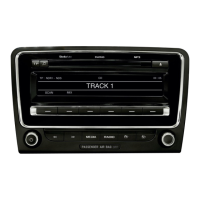
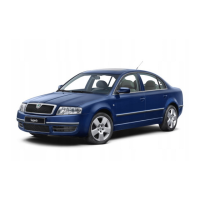
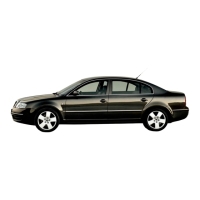
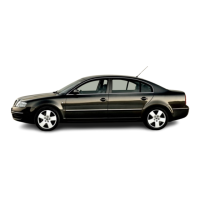

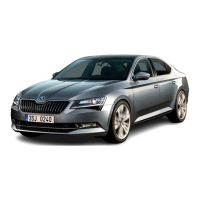
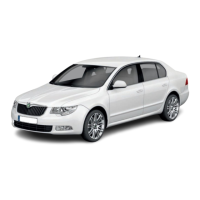
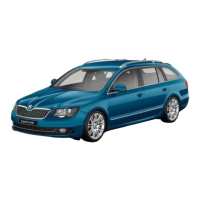
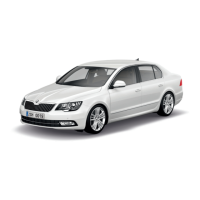



